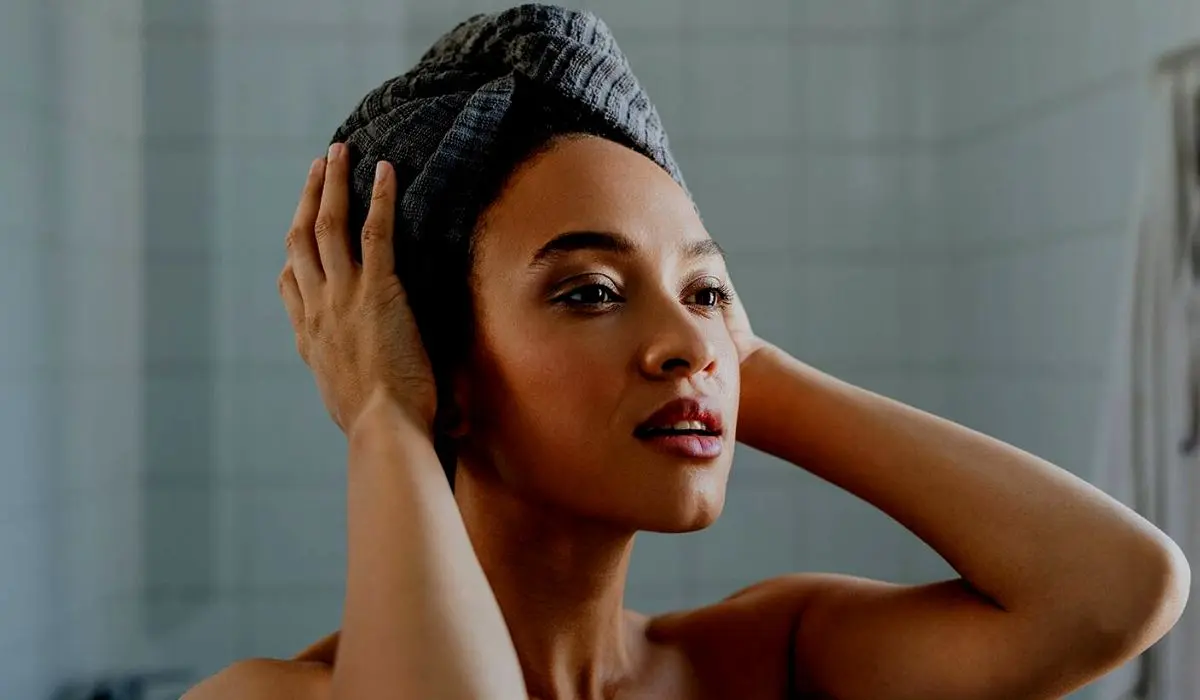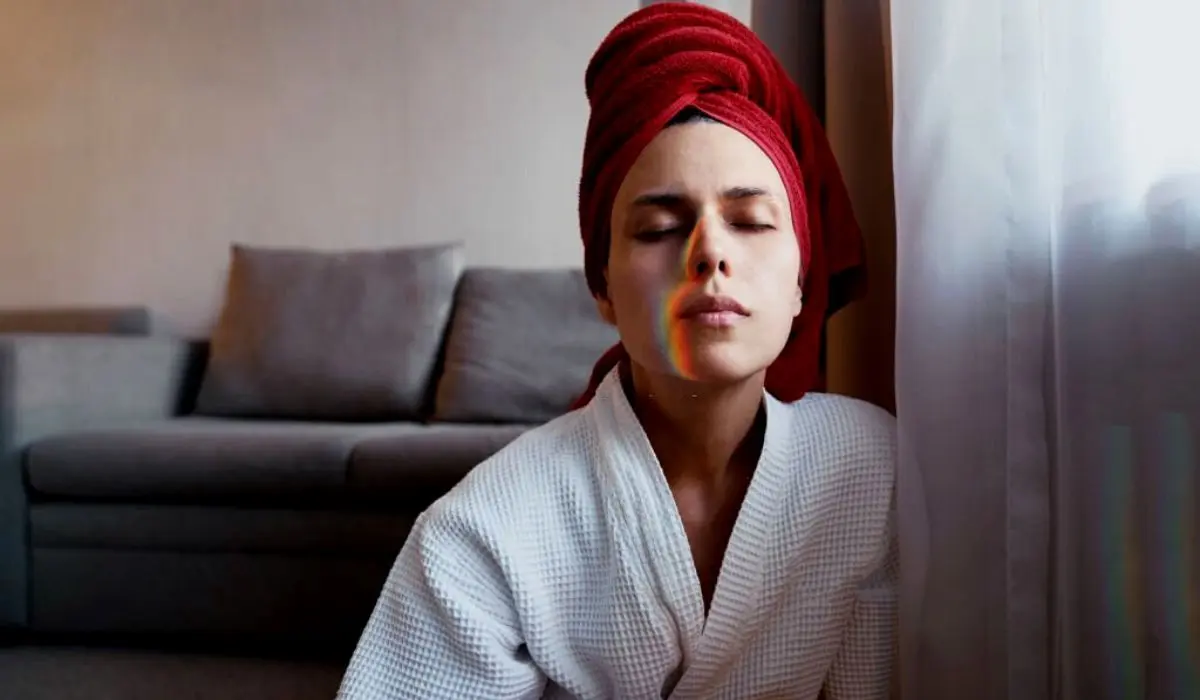Many people face issues like hair breakage, tangles, and frizz from tossing and turning during sleep. Wrapping your hair properly at night can help protect your hairstyle and maintain healthy hair.
Hair wrapping not only prevents damage but also provides extra hydration and allows you to wake up with soft, shiny hair. Learning simple techniques to wrap your hair before bed can give you the lush locks you crave.
What Is Hair Wrap? How It Is Beneficial For Sleeping?
Hair wrapping refers to the practice of gathering your hair and wrapping it in a protective covering before going to bed. It is highly beneficial for maintaining hair health during sleep since it prevents friction that causes tangles, knots, and hair loss.

Wrapping creates a barrier between your hair and the pillowcase or bedding by covering it in silk or satin. This allows you to retain moisture in your hair overnight. Waking up with wrapped hair also saves time styling it in the mornings.
Step By Step Process Of Wrapping A Hair For Sleeping
Follow these steps for easy hair wrapping before bedtime:
- Start with freshly washed, conditioned, and detangled hair.
- Apply any leave-in treatments or oils to boost hydration.
- Gather hair gently without pulling in your preferred protective style – braid, bun, or ponytail.
- Wrap hair in a silk or satin scarf, cap, or pillowcase. Tie ends securely.
- If hair is too short for wrapping, simply cover it with a satin bonnet.
- For extra hold, wrap your hair in a soft cotton headwrap over the satin cover.
- In the morning, unravel your hair slowly and style as desired.
- Refresh curls or waves with a spray bottle to maintain volume.
Different Types Of Hair Wrap For Sleeping
There are many options when it comes to protecting your hair at night:
- Silk/Satin Scarf – The slippery texture prevents moisture loss and friction. Tie around the head or just on the hair end.
- Silk/Satin Bonnet – Encases all your hair comfortably without coming untied. Comes in cap or bonnet styles.
- Silk/Satin Pillowcase – You can skip wrapping and sleep on a silk pillowcase to protect your hair.
- Satin Lined Cap – Provides complete enclosure from satin cap with cotton outer layer.
- Hair Buff – Stretchy and thin buff headwraps grasp hair gently without pressure.
- Turban Wrap – These wraps coil hair into a spiral shape before covering it with an attached turban.
- Scarf Wrap – Long rectangular silk or satin scarves can be tied in creative styles.
Benefits & Uses Of Hair Wrap
The main benefits of wrapping hair for sleeping include:
- Prevents tangles and knots from friction.
- Minimizes hair breakage and split ends.
- Reduces hair dryness and frizz.
- Protects hairstyles like braids, twists, and curls.
- Stops product transfer onto bedding.
- Prevents hair from splaying onto the face during sleep.
- Saves styling time in the morning.
- Useful during travel to protect hair.
- Provides a barrier between hair treatments and pillowcases.
7 Easy Techniques To Wrap Hair For Sleeping
Here are seven easy ways to wrap your hair at night:
1. The Classic Turban Wrap
Coil hair into a bun, twist the scarf diagonally and wrap it around securely tucking in ends.
2. The Criss-Cross Technique
Crisscross your satin scarf leaving the ends open like a headband. Then wrap them loosely over your hair.
3. The Simple Knot Wrap
Make a top knot with your hair using an elastic. Tie a silk scarf around it in a simple knot.
4. The Braid Wrap
Braid your hair or twist strands all around your head. Use bobby pins to secure.
5. The Voluminous Wrap
For extra volume, backcomb hair, smooth top layer, and wrap with a satin bonnet.
6. The End Wrap
Separate hair ends bundle, and tie loosely with a soft scrunchie. Cover with a buff.
7. The Loose Cap Wrap
Smooth hair into a loose ponytail. Pull a satin cap over leaving ends out.
Related:- 6 Best Nail Art Designs To Try At Home – A Sneek Peak!
Precautions On Hair Wrap For Sleeping
- Tie wraps gently without pulling hair.
- Avoid fabrics that snag like terrycloth.
- Don’t cover wet hair – dry before wrapping.
- Wrap with clean headwraps washed weekly.
- Change your sleeping position to prevent unraveling.
- Opt for breathable fabrics if you get hot.
- Remove elastics, clips, and pins before wrapping.
- Choose the right size wrap so it’s snug but not too tight.
- Take off the headwrap gently in the morning without tugging.
- Wash and condition hair in the morning to refresh.
- Let hair down on some nights to give hair a break.
- See a doctor if you experience headaches from wrapping.
Conclusion
Wrapping your hair properly at night can help you wake up with gorgeous, healthy hair free of tangles, frizz, and damage.
Protective styles like buns along with silk and satin hair wraps provide a comfortable barrier that retains moisture and prevents breakage while you sleep.
Get creative in choosing a wrap design that suits your hair length and texture. With these simple techniques, you can minimize morning styling time and embrace your lovely locks all day long.
Read More:- 8 Amazing Bun Hairstyles You Need To Check Out!
FAQs
1. Does wet hair need to be dried before wrapping for sleep?
A. It’s recommended to wrap hair only when completely dry. Wet hair is fragile and wrapping may cause breakage. Let your hair air dry fully before wrapping it at night.
2. How can I choose the right material for a hair wrap?
A. Opt for soft, smooth materials like silk or satin that provide friction-free protection. Avoid towels, cotton t-shirts, and other fabrics that can snag hair.
3. Is it okay to sleep with hair wraps every night?
A. Yes, you can wrap your hair every night as a safe protective method. Make sure to use a clean wrap each night and give hair a break occasionally.
4. Can I reuse my hair wrap?
A. It’s best to use a fresh, clean wrap every night. Wash scarves, bonnets, and caps weekly and let them fully dry before reusing them to prevent bacteria buildup.
5. What if my hair wrap falls off at night?
A. Try techniques like wrapping hair in a bun or braid first to better hold the wrap in place. Adjust your sleep position to prevent unraveling.

